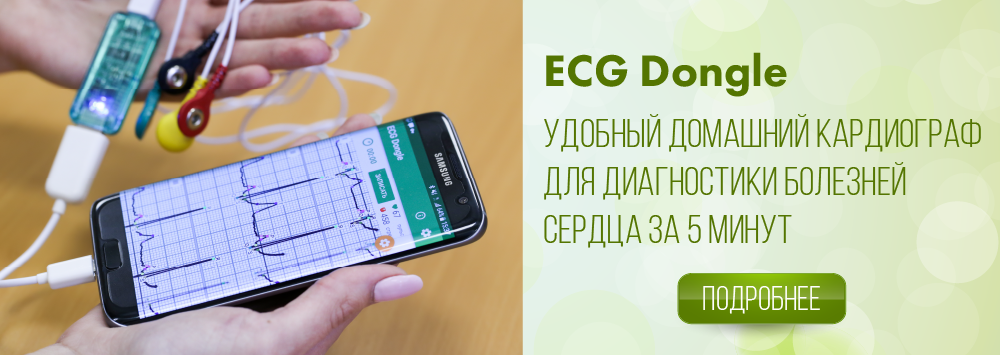Arrhythmia and its types
Arrhythmia is a disorder of frequency and rhythm of heart contractions. Normally heart beat’s frequency is 50-70 at rest and up to 160-180 beats per minute during exercise. If the heart rate at rest is greater than 100 or less than 40, it speaks of the arrhythmia.
A healthy heart normally has a clear consistent heart rate. The frequency ranges 60-90 beats per minute. Atrial contractions are replaced by ventricular contractions and then the heart muscle is at rest within 0.4 seconds.
The key importance in the heart contractions has the sinus node, located in the right atrium. The sinus node generates an electrical signal defining the rhythm of heart muscle contractions. If the cause of arrhythmia is malfunction of the sinus nod, they say about sinus arrhythmia (sinus bradycardia, sinus tachycardia). If the signals causing the arrhythmia are outside the sinus node, they talk about other types of arrhythmia.
- Sinus tachycardia is an increasing of the heart rate more than 90 beats per minute. It feels like a heartbeat. Sinus tachycardia can be caused by increased body temperature, emotional tension, and other external causes.
- Sinus bradycardia is a decreasing of the heart rate less than 55 beats per minute. Bradycardia may accompany hypotension, heart disease, and lowering of thyroid function. It can be felt as discomfort in the heart, weakness, dizziness.
- Extrasystole is a heart rhythm failure, caused by the occurrence of additional excitation in the heart chambers. Signals transmitted from these foci cause premature contraction of the heart (premature beats). In this case the person feels interruptions in heart’s work.
- Atrioventricular junctional tachycardia is regular, but very frequent heart rate, the frequency of which can reach 140-240 beats per minute. This type of arrhythmia may cause feeling of weakness, sweating. Atrioventricular junctional tachycardia starts and disappears suddenly. The reasons for its occurrence are similar to arrhythmia.
- Atrial fibrillation. This type of arrhythmia is characterized by indiscriminate contractions of individual muscle fibers. People suffering from this disorder often complain of a feeling of fluttering in the chest, dyspnea.
- Heart block (AV block I, III, II degree type 1 and type 2 are accompanied by the periodic disappearance of the heart contraction (except first-degree atrioventricular block). There are complete and non-complete heart blocks. This type of arrhythmia may cause fainting, seizures. Complete heart block may lead to heart failure and sudden death.
- Ventricular fibrillation is characterized by a complete asynchronous contraction of individual fibers of ventricular myocardium, which leads to insufficient blood output and can lead to full cardiac arrest.
- Atrial flutter is arrhythmia, manifested by acceleration of atrial contraction (up to 300 beats per minute). Not every impulse comes to the ventricles. The mechanism of atrial flutter is similar to atrial fibrillation.
Variety of cardiac arrhythmias, depending on the pathogenetic basis:
Disorder of automaticity of sinus node:
- Sinus tachycardia (heart rate over 90 / min.);
- Sinus bradycardia (heart rate less than 60 / min.);
- Sinus arrest - no heart rate;
- Sick sinus syndrome - irregular heart beat from the sinus node, which manifests itself as interruptions in heart’s work.
Ectopic (abnormal) rhythm - single or multiple heart contractions coming regularly or irregularly from any structures other than sinus node:
Passive:
- Atrial;
- Ventricular.
Active:
- Extrasystole is a premature heartbeat regular heartbeat (from the atria, the atrioventricular node or ventricle);
- Atrioventricular junctional tachycardia, atrioventricular nodal re-entrant tachycardia, atrioventricular re-entrant tachycardia, wide QRS tachycardia
Atrial fibrillation and atrial flatter:
- The atria (the heart rate is 120-140, 140-180 and over 180 / min)
- Ventricular (the heart rate is 120-160, 160-220 and over 220 / min)
Conductance disturbances (heart block) are based on slow conduction of impulses from the atria to the ventricle with the possible loss of one or more heart contractions. In severe cases, atria contracts regardless of the ventricles:
- Atrioventricular (has many kinds and the most severe consequences)
- Bundle branch block, hemi block
Pre-excitation syndrome:

